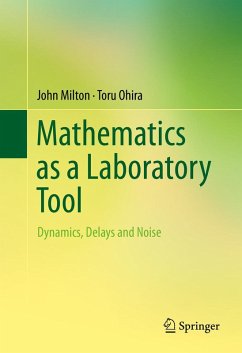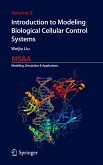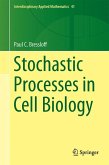The importance of mathematics in the undergraduate biology curriculum is ever increasing, as is the importance of biology within the undergraduate applied mathematics curriculum. This ambitious forward thinking book strives to make concrete connections between the two fields at the undergraduate level, bringing in a wide variety of mathematical methods such as signal processing, systems identification, and stochastic differential equations to an undergraduate audience interested in biological dynamics. The presentation stresses a practical hands-on approach: important concepts are introduced using linear first- or second-order differential equations that can be solved using "pencil and paper"; next, these are extended to "real world" applications through the use of computer algorithms written in Scientific Python or similar software.
This book developed from a course taught by Professor John Milton at the University of Chicago and developed and continued over many years with Professor Toru Ohira at the Claremont Colleges. The tone of the book is pedagogical, engaging, accessible, with lots of examples and exercises. The authors attempt to tread a line between accessibility of the text and mathematical exposition. Online laboratories are provided as a teaching aid. At the beginning of each chapter a number of questions are posed to the reader, and then answered at the conclusion of the chapter.
Milton and Ohira's book is aimed at an undergraduate audience, makes close ties to the laboratory, and includes a range of biological applications, favoring physiology. This makes it a unique contribution to the literature. This book will be of interest to quantitatively inclined undergraduate biologists, biophysicists and bioengineers and in addition through its focus on techniques actually used by biologists, the authors hope this text will help shape curricula in biomathematics education going forward.
Review:
"Based on the authors' experience teaching biology students, this book introduces a wide range of mathematical techniques in a lively and engaging style. Examples drawn from the authors' experimental and neurological studies provide a rich source of material for computer laboratories that solidify the concepts. The book will be an invaluable resource for biology students and scientists interested in practical applications of mathematics to analyze mechanisms of complex biological rhythms."
(Leon Glass, McGill University, 2013)
This book developed from a course taught by Professor John Milton at the University of Chicago and developed and continued over many years with Professor Toru Ohira at the Claremont Colleges. The tone of the book is pedagogical, engaging, accessible, with lots of examples and exercises. The authors attempt to tread a line between accessibility of the text and mathematical exposition. Online laboratories are provided as a teaching aid. At the beginning of each chapter a number of questions are posed to the reader, and then answered at the conclusion of the chapter.
Milton and Ohira's book is aimed at an undergraduate audience, makes close ties to the laboratory, and includes a range of biological applications, favoring physiology. This makes it a unique contribution to the literature. This book will be of interest to quantitatively inclined undergraduate biologists, biophysicists and bioengineers and in addition through its focus on techniques actually used by biologists, the authors hope this text will help shape curricula in biomathematics education going forward.
Review:
"Based on the authors' experience teaching biology students, this book introduces a wide range of mathematical techniques in a lively and engaging style. Examples drawn from the authors' experimental and neurological studies provide a rich source of material for computer laboratories that solidify the concepts. The book will be an invaluable resource for biology students and scientists interested in practical applications of mathematics to analyze mechanisms of complex biological rhythms."
(Leon Glass, McGill University, 2013)
Dieser Download kann aus rechtlichen Gründen nur mit Rechnungsadresse in A, B, BG, CY, CZ, D, DK, EW, E, FIN, F, GR, HR, H, IRL, I, LT, L, LR, M, NL, PL, P, R, S, SLO, SK ausgeliefert werden.
"This book, written in an engaging and intuitive style, is aimed at undergraduate biology students; its primary goal is to provide a clear, comprehensive overview of the appropriate mathematical instruments for data collection and analysis, both deterministic and stochastic. ... the book also has the stated goal of contributing to a better shaping of the curricula for undergraduate biology education towards a better coverage of analytic, mathematical and computational methods." (Paul Georgescu, zbMATH 1319.92001, 2015)



